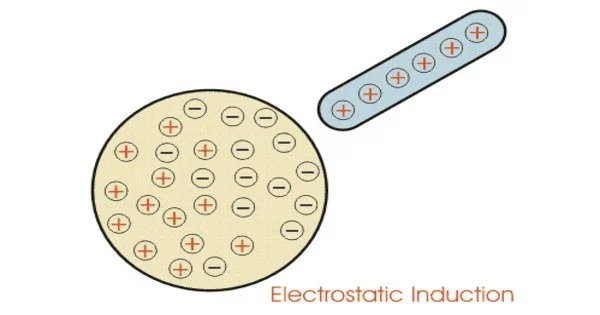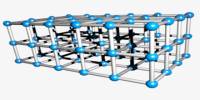Electrostatic induction is a redistribution of electric charge in an object caused by the influence of nearby charges. It is a phenomenon in which electric charges redistribute within a conductor or insulator due to the influence of an external electric field. It is also known as “electrostatic influence” or simply “influence” in Europe and Latin America. It occurs when a charged object is brought near another object, causing a redistribution of charges without direct contact between the objects.
When a charged body is present, an insulated conductor develops a positive charge on one end and a negative charge on the other. Induction was discovered in 1753 by British scientist John Canton and in 1762 by Swedish professor Johan Carl Wilcke.
Principle
When a charged object is brought close to a neutral conductor, such as a metal sphere, the charges within the conductor can move within the material. The presence of the charged object induces a separation of charges within the conductor, with the charges of opposite polarity being attracted towards the charged object and the charges of the same polarity being repelled away from it. This redistribution of charges creates an electric field within the conductor.
This principle is used by electrostatic generators such as the Wimshurst machine, the Van de Graaff generator, and the electrophorus. In this context, see also Stephen Gray. The electrostatic potential (voltage) is constant at any point along a conductor due to induction. Electrostatic induction is also responsible for the attraction of light nonconductive objects to static electric charges, such as balloons, paper, or styrofoam scraps. In dynamic situations, electrostatic induction laws apply as long as the quasistatic approximation is valid.
If the charged object is then removed, the redistribution of charges remains, resulting in a separation of charges on the surface of the conductor. The side of the conductor facing the charged object will have an excess of charges of the opposite polarity, while the opposite side will have an excess of charges of the same polarity. This separation of charges creates an electric potential difference, or voltage, between the two ends of the conductor.
This phenomenon is commonly observed in capacitors, where two conductors, usually plates, are separated by an insulating material called a dielectric. When a voltage is applied across the plates, one plate becomes positively charged, and the other plate becomes negatively charged. This charge separation is achieved through electrostatic induction.
Electrostatic induction is also the underlying principle of many electrostatic devices, including electrostatic generators, Van de Graaff generators, and electrophotographic printers (such as laser printers and photocopiers), which use charged objects or surfaces to induce charge redistribution.
















